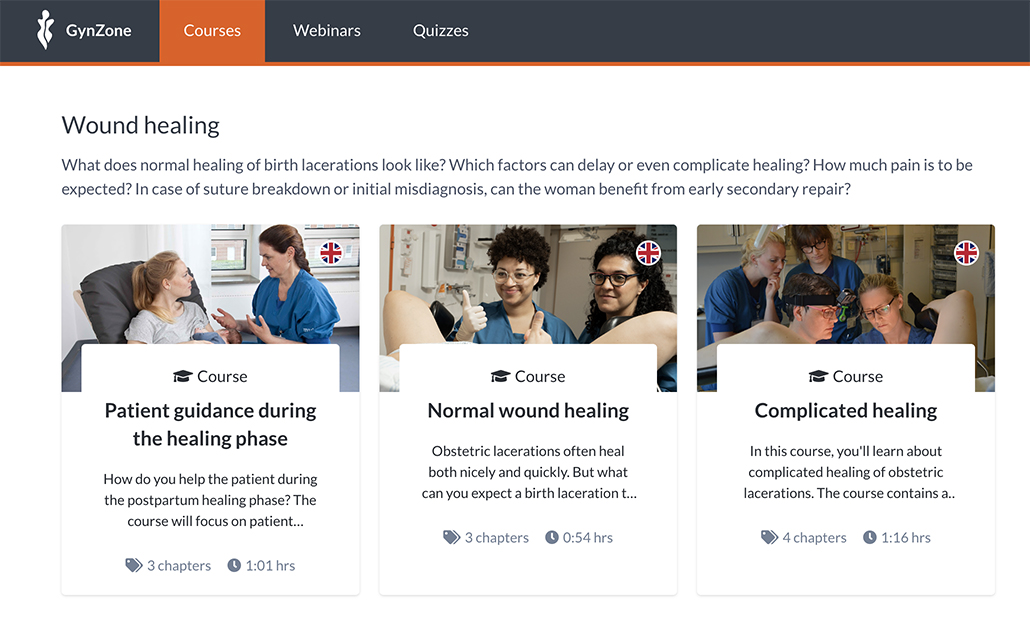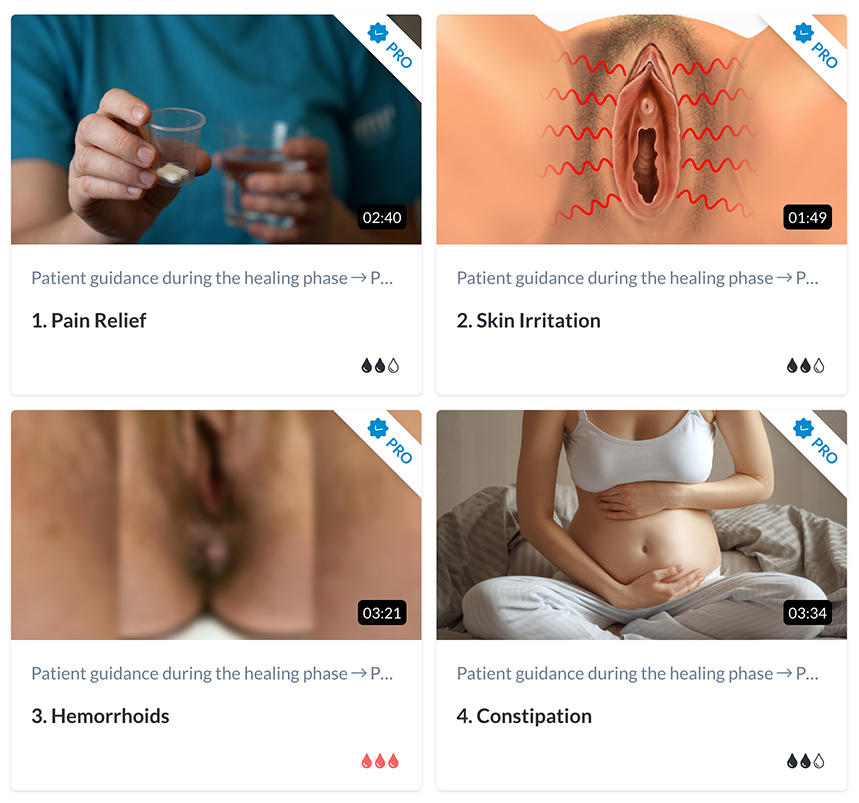Wound healing after vaginal birth
– Does this look normal?
What does normal healing of birth lacerations look like? Which factors can delay or complicate healing? How much pain is to be expected in the days and weeks postpartum? Can the woman benefit from early secondary repair in case of suture breakdown or initial misdiagnosis?
In these courses, you will learn about:

Patient guidance during the healing phase

What should patients anticipate during the postpartum healing period? This course is designed to help you guide patients through the evaluation of lacerations in the days and weeks following childbirth. Additionally, we will cover pain, strategies for pain relief, and other typical conditions that may cause discomfort during the recovery process.
Normal wound healing
Obstetric lacerations typically heal well and swiftly. But what should you expect a birth laceration to look like on day 2 or day 5 postpartum? In this course, you’ll explore the normal wound healing process and examine clinical cases of healing for labial tears and abrasions, 1st-degree and 2nd-degree tears, mediolateral episiotomies, as well as 3rd- and 4th-degree lacerations (OASI), involving the anal sphincter complex.

Complicated healing

In this course, you’ll explore the complex healing processes of obstetric lacerations. It includes numerous clinical cases covering conditions such as hematoma, infection, wound dehiscence, suture breakdown, rectocele, keloid scars, hypergranulation tissue, and irritation caused by suture materials.
That’s what users are saying
Authors of the course

Sara Kindberg
Midwife, PhD, Founder of GynZone
Clinical Perineal Care Specialist.
Sara wrote her PhD Thesis on suturing of second-degree perineal trauma in 2008.

Eva Dimon
Midwife, Clinical specialist
Eva specialises in perineal repair and postnatal evaluation of healing.


